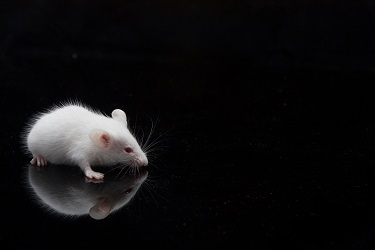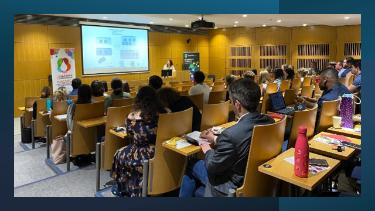Adapting to Life at Low Oxygen
We as humans need air to breathe; more precisely, we need the oxygen in the air to produce the energy that keeps our hearts pumping, our brains thinking and our bodies functioning. Only a few minutes of oxygen deprivation are sufficient to shut all processes down and kill us. Though the presence of oxygen is critical for life, humans and other mammals are surprisingly adaptable to different oxygen concentrations in the air.
A highlander living at 4,500 metres on the Tibetan Plateau breathes air with half the oxygen pressure of that inhaled by a person living at sea level. This ability to adapt to low oxygen conditions is encoded by a family of oxygen-utilising enzymes called hydroxylases. These enzymes sense the presence of oxygen and transmit this signal by modifying proteins which can trigger adaptations, such as increasing blood delivery, switching to oxygen-independent energy production or production of red blood cells.
For over 15 years it was thought that hydroxylases generally regulate one master controller, called HIF, and that this was an all-or-nothing response. But new research suggests that the picture is murkier. It was recently shown that hydroxylases can regulate events upstream of HIF (Lee et al., 2016), thus eliciting a distributed controlled mechanism, rather than switching HIF on and off only at one level. In addition, research lead by Systems Biology Ireland has identified numerous pathways to be affected by hydroxylases, most of which are involved in adaptation to low oxygen (Rodriguez et al., 2016). Crucially, these signalling pathways are affected by hydroxylase at numerous levels, again suggesting that the control is distributed over the entire network.
Interestingly, many of the pathways affected are critical for cancer development, which would suggest that altering hydroxylase activity may be a novel way to kill cancer cells. As proof of principle our team at SBI has shown that a kinase, RIPK4, which regulates an essential pathway in colon cancer progression is regulated by these enzymes. Using drugs which inhibit hydroxylase activity can stop RIPK4 from signalling through this pathway. Drug companies have already developed inhibitors to the hydroxylases, mainly for treatment of anaemia and kidney disease, and future research will show if hydroxylase-targeting drugs may be novel anti-cancer treatments.
Further information
Substrate-trapped interactors of PHD3 and FIH cluster in distinct signaling pathways.
Rodriguez J, Pilkington R, Garcia Munoz A, Nguyen LK, Rauch N, Kennedy S, Monsefi N, Herrero A, Taylor CT, von Kriegsheim A
Cell Reports. 2016 March 22; 14, 1 doi: 10.1016/j.celrep.2016.02.043
An ID2-dependent mechanism for VHL inactivation in cancer.
Lee SB, Frattini V, Bansal M, Castano AM, Sherman D, Hutchinson K, Bruce JN, Califano A, Liu G, Cardozo T, Iavarone A, Lasorella A
Nature. 2016 Jan 14;529(7585):172-7. doi: 10.1038/nature16475. Epub 2016 Jan 6.
Alexander von Kriegsheim is a Research Fellow at the Edinburgh Cancer Research Centre, University of Edinburgh, and formerly a Junior Group Leader at SBI. His team in Edinburgh aims identify potential weaknesses in the otherwise robust signalling networks of cancer cells which can be exploited for therapeutic intervention.

